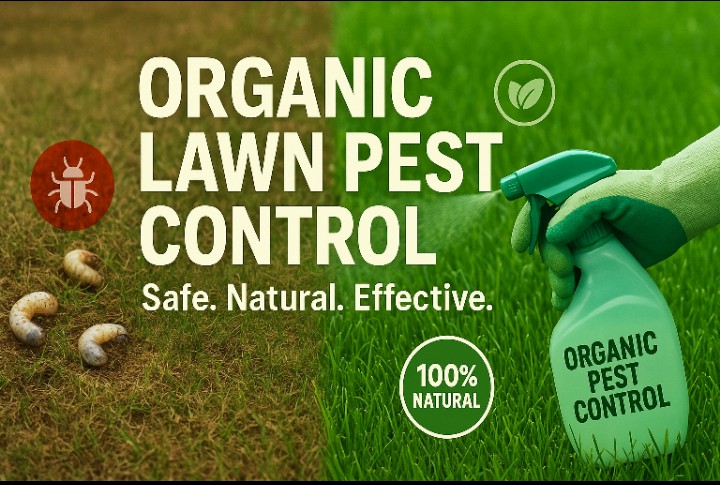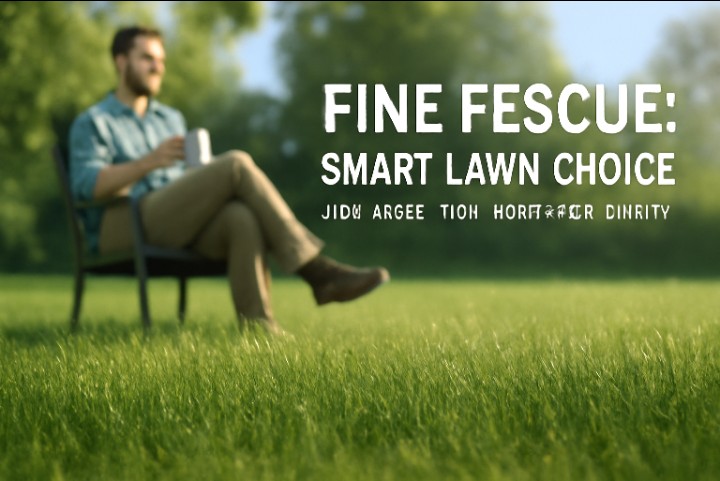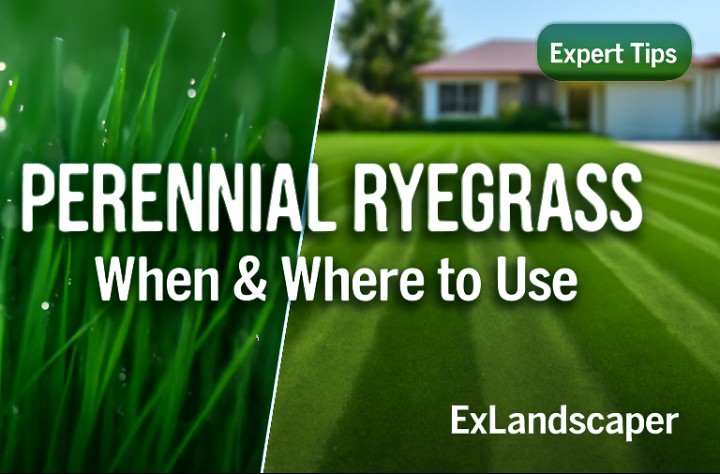Lawn pests can destroy turf by feeding on grass, tunneling and transmitting diseases. Various homeowners want to use natural means of pest control as alternatives to pesticides. This guide details organic options using university research and ag studies.
What is Organic Pest Control?
Naturally based pest control is the use of certain materials found in nature as well as living organisms to control pests. These practices are USDA certified organic and are based on biological, physical or biochemical processes rather than synthetic actions.
Chemical pesticides are faster-acting and longer lasting, but organic approaches cause less toxicity to non-target organisms and break down more rapidly in the environment. The only major trade-off is application frequency—organic varieties typically require reapplication every 7-14 days versus approximately 3-4 weeks for synthetic selections.
Beneficial Nematodes
These microscopic worms are beneficial nematodes, which parasitize soil-living grubs. Species like Steinernema and Heterorhabditis invade the grub larvae, then release bacteria to kill the host.
Target Pests:
– Japanese beetle grubs
– European chafer grubs
– Billbug larvae
Spray in late summer to early fall when the larvae are small and feeding. The soil should remain moist for nematodes to continue their life-cycle.
These parasites are harmless to humans, pets, earthworms and beneficial insects. They have no impact on general pest species. Repeat application as anbiotic monitoring indicates.
Bacillus thuringiensis (Bt)
Bt is a common soil bacterium that naturally produces proteins that are toxic to certain species of insect larvae. When larvae feast on Bt, the proteins shred their gut lining, killing them within a few days.
Bt strains affect different pests:
– Bt kurstaki controls caterpillars, gypsy moth larvae and webworms
– Bt san diego is effective against beetle larvae
– Israelensis attacks mosquito and fungus gnat larvae in water
Apply Bt at the peak of target larvae feeding. It comes in sprays and dusts, as well as granules. You must reapply after heavy rain, because it breaks down in sunlight and water.
Bt Is Of Low Toxicity For Mammals And Humans. Strain-Specific Products When Strain-specific products are used, non-target insects and its impact on aquatic life is minimized.
Neem Oil
Neem oil, derived from the seeds of the neem tree (Azadirachta indica). More odorous is that its main compound, azadirachtin, attacks bugs not by poisoning them outright but disrupting their feeding, growth and reproduction.
Target Pests:
– Aphids
– Whiteflies
– Thrips
– Caterpillars
– Mealybugs
Combine 2-4 tablespoons per gallon of water and use every 7-14 days. Apply spray early in the morning or late in the afternoon, since full sun decreases its effectiveness.
In the meantime, hand mix fresh neem oil for each use as it breaks down after a few hours. It’s USDA organic certified and non-toxic to birds, mammals and bees when used as directed on the product label. Its slightly toxic to aquatic organisms, so don’t allow it to runoff into water.
Diatomaceous Earth
Diatomaceous earth (DE) resembles fossilized algae with small jagged edges. The edges shred through insect exoskeletons dehydrating and killing by physical action rather than poison.
Target Pests:
– Grasshoppers
– Fleas
– Crickets
– Japanese Beetles
– Ticks
Use it by either a duster-type applicator as a dry dust, or mix 1lb with one gallon of water when using as spray. Then reapply after rain, or weekly, because water washes it out.
(Although food grade DE is not toxic to humans, fish, birds or aquatic invertebrates like the pest–grade kind.) While the powder is very fine and breathing it in can irritate your airways, you should wear a mask when applying.
Sulfur
Elemental sulphur has been used as an insecticide for more than half a century. This interrupts insect energy production within target pests, especially mites and spiders.
Target Pests:
– Mites
– Thrips
– Chiggers
– Ticks
– Spiders
It comes in dust, wettable powder or liquid formulations. Do not apply sulfur in temperatures over 80 degrees, when plants can be burned with hot sun.
Human Toxicity Normal sulfur use has a low degree of toxicity Hodgson, Pohl Looney 1979), but in large amounts it can be harmful if consumed by animals. Follow label rates exactly to guard against injury.
Spinosad
Spinosad is a fermentation product of a soil bacterium (Saccharopolyspora spinosa). It works by overexciting insect nervous systems and results in paralysis and death of the insect within 1-2 days.
Target Pests:
– Fire ants
– Caterpillars
– Thrips
– Leaf miners
– Spider mites
It comes in sprays, dusts, granules and baits. Spray late in the day or evening to minimize pollinator exposure and do not treat flowering plants.
Spinosad is not toxic to mammals and humans. But it is very toxic to bees during application (safe when dry), and moderately harmful to some aquatic creatures and earthworms. Once dry on a plant’s surface, the product is safe for pollinators.
Insecticidal Soaps
Insecticidal soaps have fatty acids that affect cell membranes of soft-bodied insects such as aphids, whiteflies and soft larvae. They work through direct contact.
They are not as effective on hard-coated insects as well. Induced resistance:Happens after repeated use of the same pest. Use insecticidal soap as a supplement, but not as your main weapon.
Maintaining Healthy Lawns
Healthy lawns are more resistant to pests than stressed lawn. F YOU do the kind of maintenance that denies harbor age then you can avoid a good number of pest problems and the treatments become much more effective.
Soil Health
Soil health is important because healthy soil also harbors the good microorganisms that naturally suppress pests.
Key practices:
– Top-dress once a year with compost to enrich soil structure and microbes
– Till as little as possible to maintain populations of beneficial organisms
– Keep soil pH at an acceptable level for your type of grass
Mowing
On the mowing side, maintain species at 2.5-3.5 inches tall. Mow when it’s dry, and keep the blades sharp. 14. TALLER GRASS GROWS MORE ROOTS You will see more green — and for good reason: Taller grass develops deeper roots and withstands stress better.
Watering and Fertilizing
Water deberly but infrequently to promote the plants to root deeply. Overwatering leads to the type of moist environment that fungal disease thrives. Apply slow-release organic fertilizers according to soil tests.
Integrated Pest Management
IPM includes monitoring, prevention and targeted treatment. This is better than cure.
Steps to implement IPM:
1. Frequently inspect your lawn for signs of pest activity and damage
2. Identify pests correctly—ask your local university extension service for assistance in identification
3. Consider whether pest numbers have become sufficiently high to warrant control
4. If nothing else works, then by all means, use the least-toxic effective treatment
5. Analyze outcomes and tweak your approach from what you learn
6. Record your pest problems, treatments and outcomes to ensure you can better your process over time
How to use organic pesticides
Before Application:
– Read the entire label before using this product
– Identify your target pest accurately
– Choose the proper product and composition for your purpose
– Watch the weather and don’t apply prior to rain!
Safety Gear:
– Long sleeves
– Long pants
– Chemical-resistant gloves
– Goggles
– Respirator or dust mask for dust applications
Application Guidelines:
– Apply during low-wind conditions
– Ensure children and pets are not present when applying products, and until such treated areas have dried
– To prevent harm to bees, apply in the late afternoon or evening when bees are not active
– Avoid treating flowering plants
– Adhere to all labeling of bee-toxic materials, especially spinosad
– Apply according to label rates only—more product does not mean better results
– Cover affected areas as necessary
– Set calendar reminders for reapplication
– Record date of application, product, rate, target pest and weather conditions
Cost Considerations
The first-time cost for organic and synthetic items is the same. Long-term costs vary, but those who rely on organic methods need to apply much more regularly –say every 7-14 days instead of 3-4 weeks for synthetic pesticides. This translates to higher seasonal costs for products and labor time.
Ways to minimize applications:
– Deploy sustainable biological controls, such as beneficial nematodes
– Emphasize preventive cultural practices
– Apply only to hot spots in the lawn
– Combine methods of control
Regional Pest Management
Pest species Fuller et al., 2008 and optimal time of ttreatment differ by area. Reach out to your local university extension service for advice based on your location.
They offer:
– Free pest identification
– Regional pest control calendars
– Climate-specific advice
– Soil testing services
Finding Extension Services:
– U.S.: Search for “[your state] university extension”
– Canada: Look up “provincial agriculture extension”
– Europe: Search “agricultural advisory service [country]”
Regulatory Requirements
Regulatory requirements also vary. In the U.S., commercial services are governed by USDA organic certification standards and state laws differ, so be sure to check local regulations. The E.U. has organic regulations that are tighter than those of the USDA. Check that products are certified EU organic or ECOCERT.
When to Hire Professionals
Professional pest management service may also be worthwhile to consider when:
– Repeated infestations persist despite several treatments
– You have extensive lawn areas that need equipment for commercial applications
– Disease issues are problematic and demand diagnosis and special solutions
– You need organic certification verification on commercial properties
Summary
Organic pest control operates by identifying pests accurately, choosing the right controls, determining the best time for application and then following through with enough applications to help keep your lawn healthy.
These approaches are more environmentally friendly, with less exposure risk to humans. There must be regular checks, right application and a level of patience in the process.






